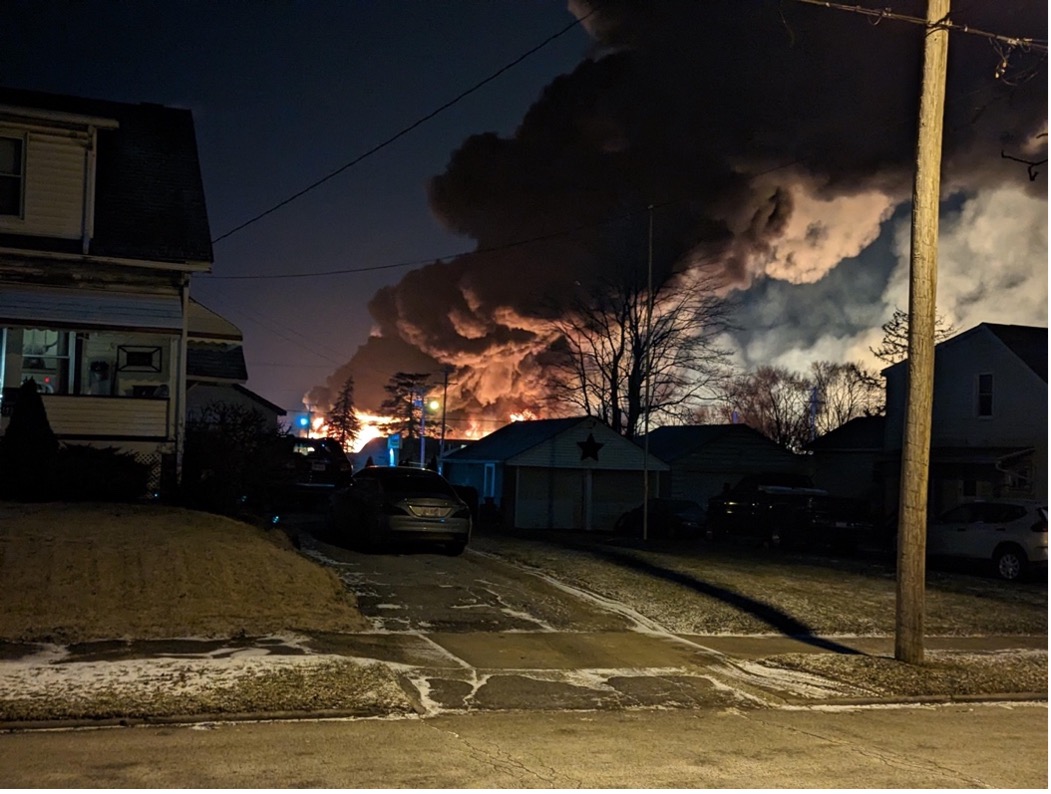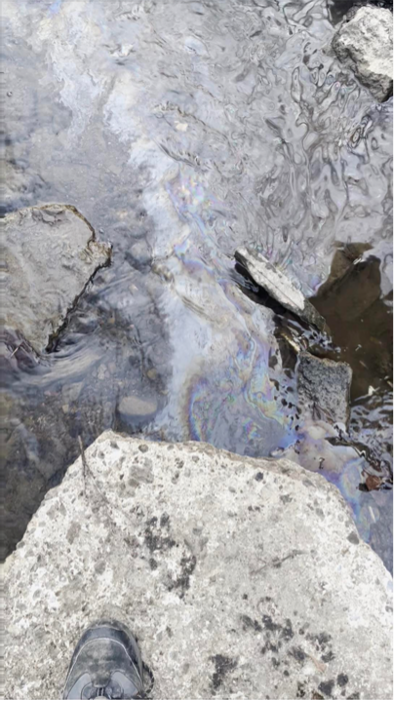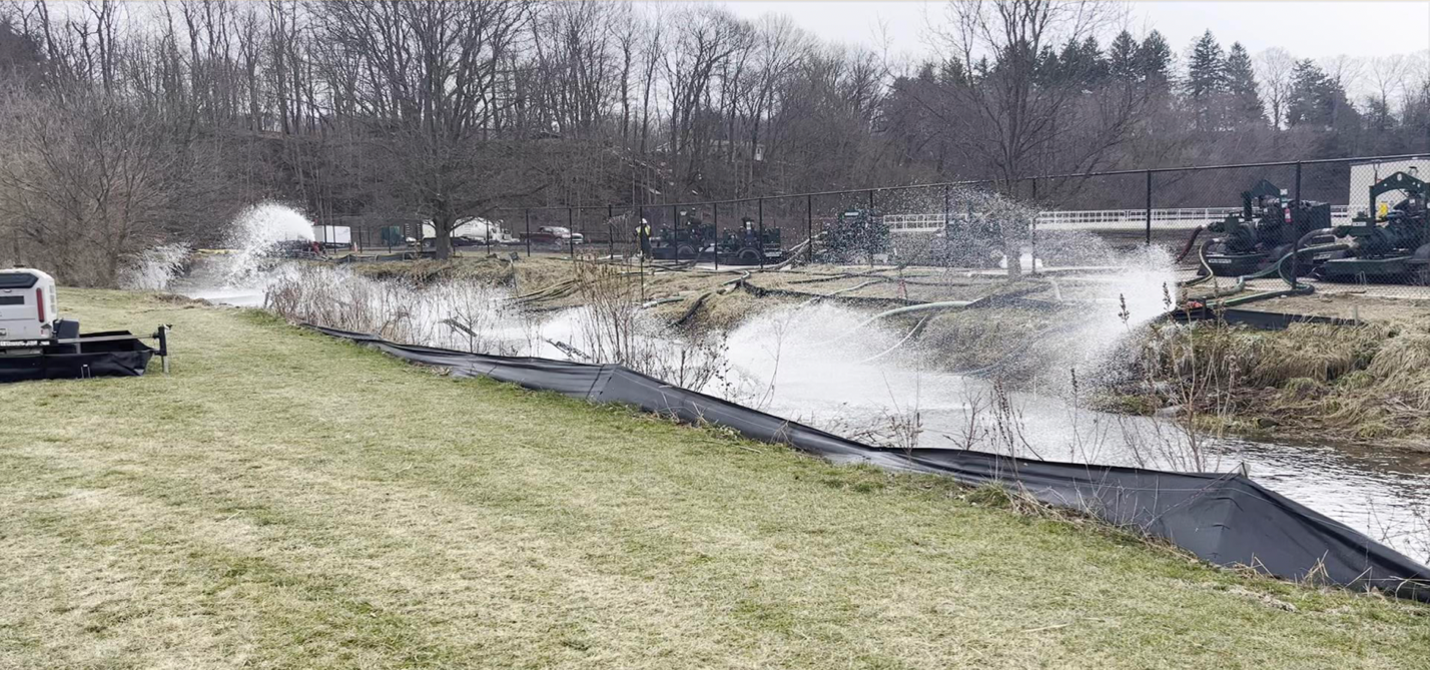
Chemical disaster reveals need for good science in crisis responses
The fire burning immediately after the Norfolk Southern train’s derailment in East Palestine, Ohio on Feb. 3, 2023. Photo by Imgur user Thunderlips36, Wikimedia Commons (CC BY-SA 4.0)
Just before 9 p.m. on Feb. 3, a train carrying toxic chemicals derailed in East Palestine, Ohio. More than eight months later, amid a fog of misinformation and mistrust, residents of the small town near the Pennsylvania border are still not sure when they’ll be safe in their own homes.
In the weeks after the crash, and to this day, officials have repeatedly told residents the mess has been managed. But when those residents started feeling sick, their concerns were downplayed. Scientists and journalists discussed the spill and subsequent communication breakdown at an Oct. 9 panel at the Council for the Advancement of Science Writing’s New Horizons in Science briefing at the ScienceWriters2023 conference in Boulder, Colo. (A video recording of the session is available.)
Reporting on Disaster
Scientists and journalists discuss how residents came to mistrust the official story in East Palestine, and the role outside experts and reporters have in representing the public interest during chemical disaster situations.
In an interview prior to the panel, Andrew Whelton, an environmental engineer at Purdue University, said the uncertainty among residents comes from a disconnect between their lived experiences and what they’ve heard from government agencies. “When people are getting sick, [officials] refused to acknowledge it,” he said. “Nobody took responsibility.”
Sharon Lerner, a journalist for ProPublica who reported in East Palestine, said during the panel that she talked to people who felt sick. But, paraphrasing the official stance, she said, “the EPA was consistently saying, ‘We do not see that there is any reason for you to feel ill.’”

On the icy Friday night, a 1.75-mile-long train operated by Norfolk Southern derailed, dumping railcars into Sulphur Run creek, including 11 that contained toxic materials. Several cars caught fire. East Palestine’s mayor evacuated everyone living within a one-mile radius of the crash site.
Three days later, on Feb. 6, Norfolk Southern emergency crews and local first responders performed a controlled burn of five cars containing vinyl chloride, a chemical used in manufacturing PVC pipes. They released the liquid into an adjacent ditch and ignited it, sending up a plume of acrid smoke containing toxic gases.
Prior to the burn, Ohio governor Mike DeWine had appeared on television to explain to residents how the burn would affect their homes. He showed models of a small smoke plume travelling southeast from the ignition site. He then ordered anyone within the plume’s range to evacuate.
But the governor’s model failed to accurately predict the extent of the toxic plume, which spread far beyond the evacuation area, Whelton said. As a result, “people were exposed by following the advice of officials.”
The problems for residents of East Palestine weren’t over after the smoke dissipated. Three weeks after the derailment, Whelton and his team arrived in town at the invitation of United for East Palestine, a residents’ group formed on the day of the derailment.
By this time, officials had already advised residents that any remaining chemicals were contained at the derailment site and the air and water was safe. But when Whelton visited Sulphur Run, he saw chemical slicks on the creek’s water—half a mile from the site.

He also saw aeration pumps, which EPA officials had placed to oxygenate the water, allowing microorganisms to break down harmful volatile organic compounds (VOCs), Whelton said. While this could improve water quality, he said, it also released the VOCs into the air, with homes as close as 10 feet away.
Meanwhile, Norfolk Southern contractor CTEH tested air quality using handheld photoionization detectors that weren’t equipped to pick up all of the chemicals from the derailment. “These handheld devices were used in a way that they were never meant to be used,” Whelton said. “And the EPA approved and signed the plan.”
In the weeks following the burn, residents, emergency workers, visiting politicians, federal health investigators, and even Whelton himself reported feeling sick. But in congressional testimony on March 9, Norfolk Southern Chief Executive Officer Alan Shaw said that none of their test results “indicate a health risk from incident-related substances.”
In an e-mail response to a request for comment after the session, a U.S. EPA spokesperson said the detectors were just one piece of a diverse set of sampling tools but conceded that they were unable to detect at least one potentially hazardous chemical “at or below the long-term action levels.” The agency also said monitoring data continue to show exposure levels of 79 chemicals are “below levels of concern for adverse health impacts from short-term exposures” and that “no monitoring readings or analytical results above site-established action levels have been reported in the community since the evacuation order was lifted.”
Meanwhile, amid the criticism, the EPA is launching an internal investigation. But the agency needs to do more than that, Whelton said, in part by being more open to outside experts. Whelton said the long-term impacts of the crisis are among the worst he’s ever witnessed and are emblematic of systemic failures in response to these types of incidents.
“The U.S. EPA said that the air is safe; there are no acute health risks,” he said. “And so it was just an absolute systemic failure of the ability of agencies to act in the public’s interest to protect people from harm.” In Whelton’s experience, “this isn’t unprecedented,” but part of an ongoing “problem with U.S. disaster response when it comes to chemical disasters.”
Part of the solution to these systemic failures, in addition to bringing outside experts into the process, is holding officials to account in the public eye by giving voice to those who feel ignored, says Lerner. “As journalists… part of what we can bring in are the people who feel sick.”